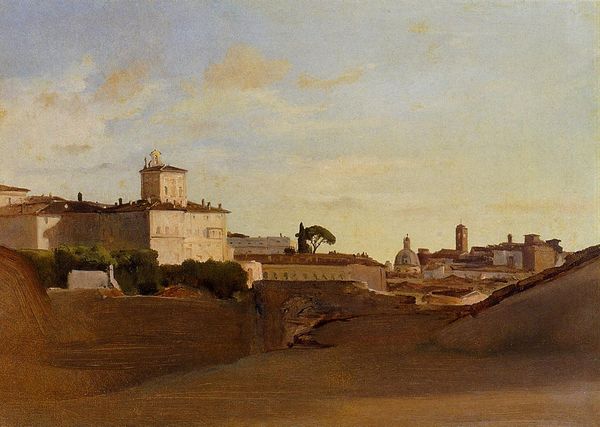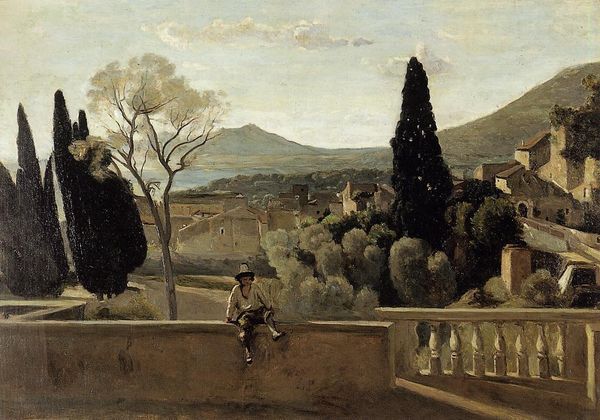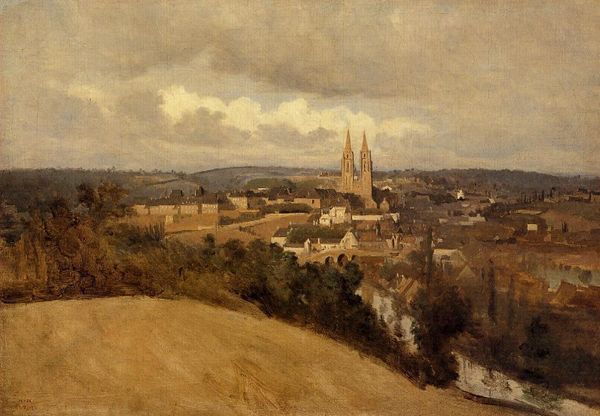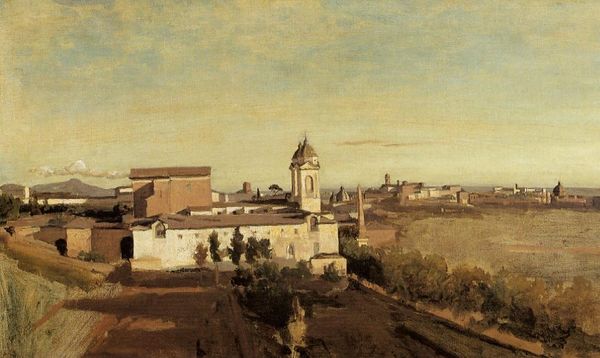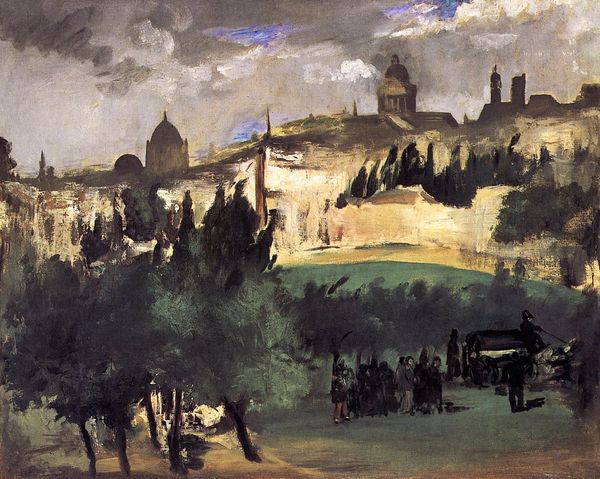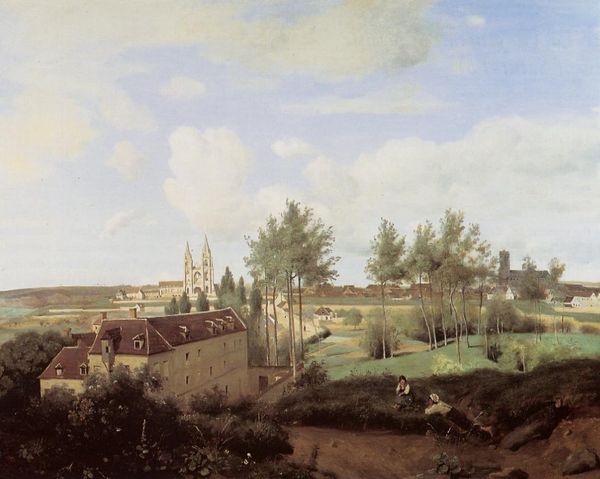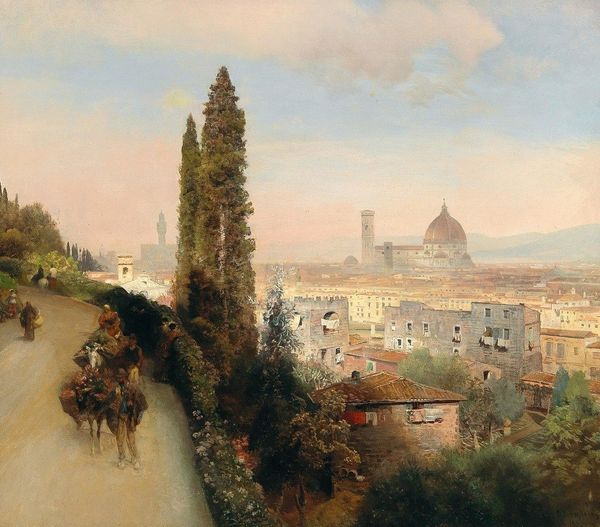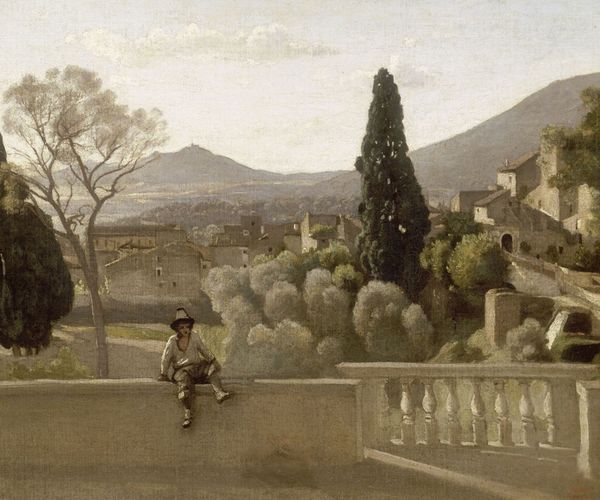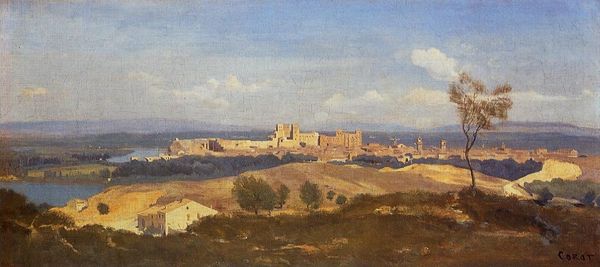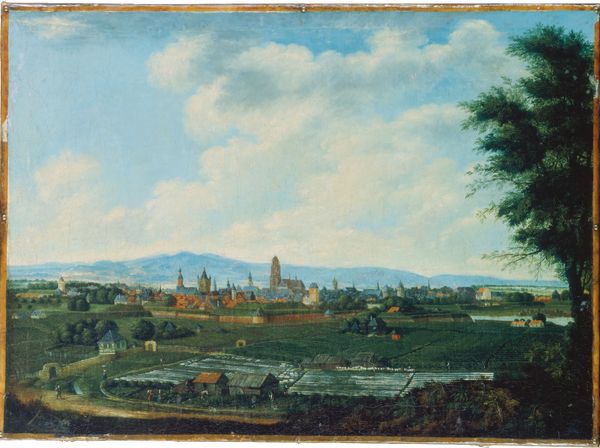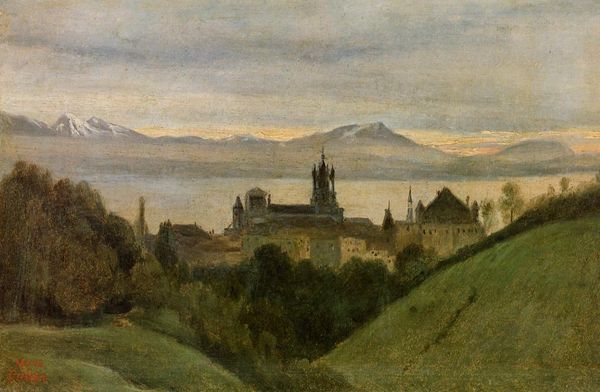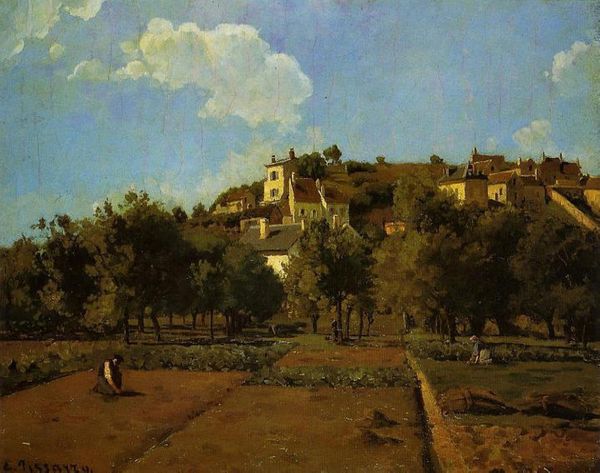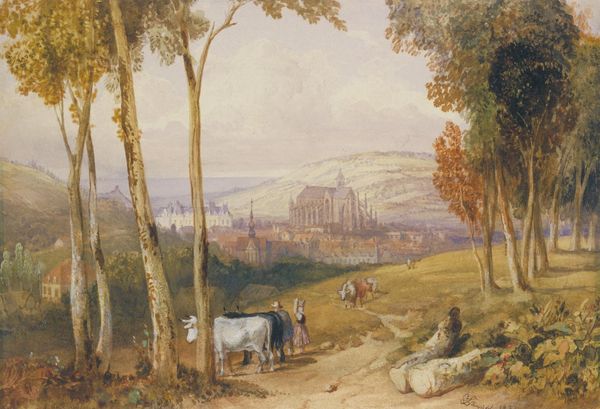
painting, plein-air, oil-paint
#
painting
#
plein-air
#
oil-paint
#
landscape
#
oil painting
#
romanticism
#
cityscape
#
italian-renaissance
Copyright: Public domain
Curator: Right then, let’s delve into this serene vista – Corot’s “Florence, The Boboli Gardens” from 1835, created with oil paints in a plein-air style. What strikes you first? Editor: Immediately? A stillness. That soft, golden light washing over the scene—it feels like a memory, viewed through gauze. Nostalgic, somehow. Curator: I agree about the atmosphere. It’s tempting to see the artist as isolated, given this style’s departure from academic confines and toward individualized plein-air approaches during this time. Consider how landscape was treated, consumed, and regarded in relation to expanding social ideals and markets for Italian experiences. Editor: Absolutely! It's less about topographical precision and more about evoking a feeling, an encounter, but not in the idealized landscape form. I like how the figures in the foreground aren't romanticized. It grounds the whole painting in a different sort of experience. Curator: Yes, their presence definitely suggests the painting reflects an actual experience and setting! And consider how the application of oil paints would contribute to that sensory response. He wasn't necessarily aiming for flawless rendering, he’s inviting you into a tactile moment. Editor: Like breathing the same air! You know, the dome and the tower in the background, bathed in that light...they’re icons of human endeavor. But set against the garden and soft skyline they become almost ephemeral, part of a feeling. A moment witnessed, preserved in the making. Curator: The rendering of that cityscape in the distance highlights labor on a grand scale. But focusing our attention closer to home, notice the artist's labor, each brushstroke carefully considered to capture a feeling beyond mere physical representation. Editor: So well put. Seeing the history in it...I think that the work captures a sense of the weight and beauty that settles in over time and stays with you even when your surroundings change.
Comments
No comments
Be the first to comment and join the conversation on the ultimate creative platform.
